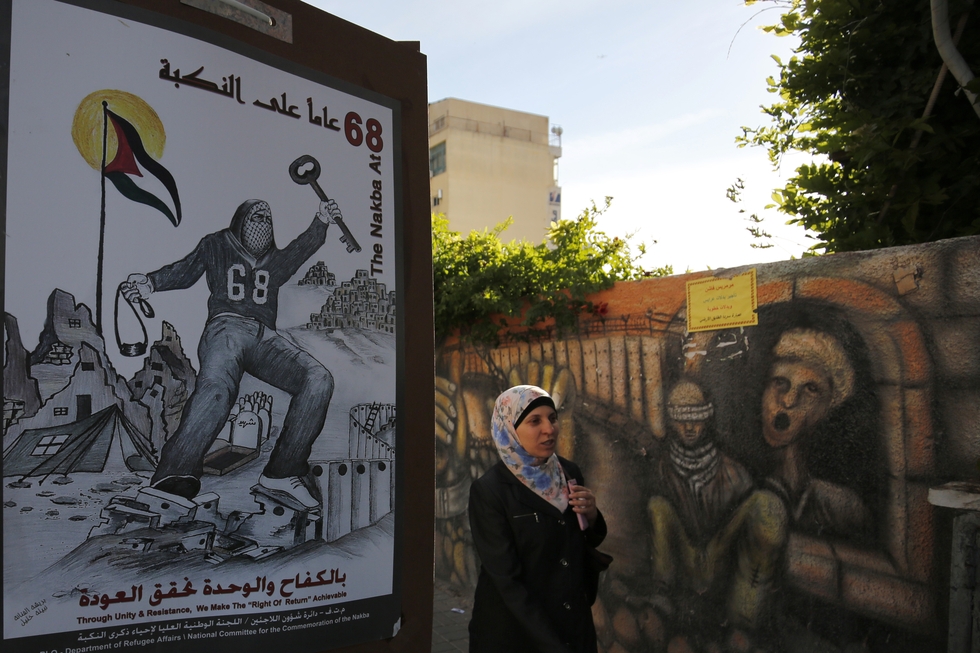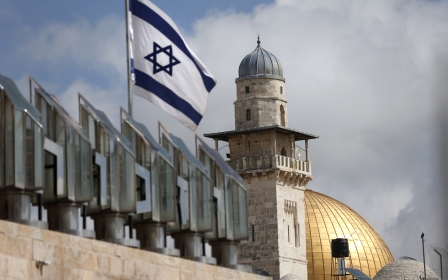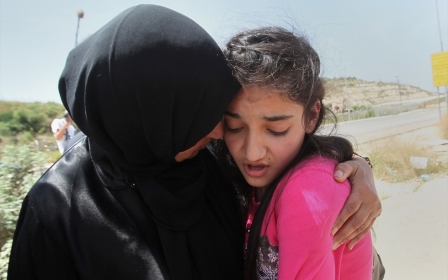Nakba Day returns, but not the Palestinians

In 1995, a journalist interviewed a number of left-wing Israelis living in West Jerusalem homes whose Palestinian owners were expelled in 1948. One (unnamed) “prominent left-winger” was particularly, and directly, unapologetic. “I don't have any problem with the fact that we threw them out, and we don't want them back, because we want a Jewish state.”
This Nakba Day, when so many urge the Palestinians to "move on" and stop "living in the past," we benefit from such frankness. At a time when efforts to dehumanise Palestinians and delegitimise solidarity with them are escalating, we need a reminder of what lies at the heart of the so-called "Israeli-Palestinian" conflict: settler-colonial displacement, and resistance.
During the Nakba (Arabic for catastrophe), around 80 percent of Palestinian towns and villages in what became Israel were emptied and destroyed; 200 of these villages had been occupied and their inhabitants expelled prior to 15 May (when the State of Israel was formally established). Refugees who attempted to return home across the armistice lines were shot dead by Israeli forces.
The ethnic cleansing of Palestine was achieved by direct expulsion, atrocities and fear of atrocities, a "whispering" campaign of intimidation, and, by the Israeli cabinet’s decision to prevent the refugees from returning home at the end of hostilities. By 1952, Israel’s parliament had passed legislation that stripped expelled Palestinians of their land and citizenship. A Jewish majority had been achieved.
What did the Nakba look like? Here are three examples.
Al-Khisas was a village in the very north of Palestine. In December 1947, elite forces of the Haganah “randomly started blowing up houses at the dead of night while occupants were still fast asleep,” killing 10-15 villagers. Israel’s first prime minister, David Ben-Gurion, subsequently included the assault in “a list of successful operations".
The majority of Al-Khisas’ inhabitants left in May 1948, little did they know never to return; the few who remained were forced onto trucks and expelled by Israeli authorities the following year. The village’s land was given to a new kibbutz; the old emir’s manor house is now a hotel.
Sa’sa’ was a thriving village with a market-place, schools, and a mosque. In February 1948, Haganah forces entered the village at night, meeting no opposition. They blew up homes at random, killing 11 Palestinians, including five small children. Months later, the last villagers were expelled; an Israeli investigation suggested more civilians were killed in the process.
In 1949, kibbutz Sasa was founded on the village’s land (as the kibbutz website acknowledges), whose first "pioneers" were from the USA. One kibbutz resident later reflected how “you could almost feel their [the refugees’] presence, where part of their possessions were left behind, with their storerooms filled with last seasons’ crop.” The mosque was turned into a museum.
A final example, that of al-Majdal. Most of its residents had fled in fear by the time the town was occupied. Remaining Palestinians were “concentrated and sealed off with barbed wire and IDF guards in a small, built-up area commonly known as the ‘ghetto’". They were finally expelled in October 1950. Al-Majdal is now the Israeli port city of Ashkelon.
The Nakba shapes the present. There are more than two million Palestinian refugees within Israel, the West Bank, and Gaza Strip, including UN-registered refugees displaced in the Nakba, and Palestinian citizens prevented from returning to their lands and properties. The vast majority of refugees, including those in neighbouring countries, live a few dozen miles from their destroyed villages.
Sixty-eight years on, and the level of ignorance and denial concerning the Nakba remains high, especially among Western politicians and opinion-formers. Some dispute the Zionist leadership’s intent, while others describe the ethnic cleansing of 700-800,000 Palestinians as a "tragic consequence of war". A dwindling few hold on to long-debunked myths about Palestinians leaving on "Arab orders".
More disturbingly, some acknowledge the record of violent displacement and exclusion, and justify it nonetheless. This position is maintained by "left-wingers" (like the one quoted earlier), as well as by the likes of Israeli premier Menachem Begin’s adviser on Arab affairs: “If we needed this land,” he said, “we confiscated it from the Arabs. We had to create a Jewish state in this country, and we did.”
The Palestinians are not the only indigenous people to have faced the horror of settler colonialism, but for the Palestinians the process of colonisation and conquest has not ended. Land expropriations and displacement continue, whether in Galilee and Naqab/Negev, or in the Jordan Valley and southern Hebron hills. Refugees are in sight of their lands, behind fences and walls.
The return of Palestinian refugees is seen as a "threat" by the Israeli state and its advocates because “it would disrupt the demographics that allow the survival of an ethnocratic regime via democratic means". Nakba Day is a reminder of how such a regime was established – and the refugees’ return will indeed be at the heart of its transformation into a decolonised democracy of its citizens.
- Ben White is the author of Israeli Apartheid: A Beginner’s Guide and Palestinians in Israel: Segregation, Discrimination and Democracy. He is a writer for Middle East Monitor, and his articles have been published by Al Jazeera, al-Araby, Huffington Post, The Electronic Intifada, The Guardian’s Comment is free, and more.
The views expressed in this article belong to the author and do not necessarily reflect the editorial policy of Middle East Eye.
Photo: A Palestinian woman walks past a poster depicting a key symbolising the keys to houses left by Palestinians in 1948, on 11 May, 2016, in the occupied West Bank city of Ramallah, a few days ahead the 68th anniversary of the 'Nakba' (AFP).
New MEE newsletter: Jerusalem Dispatch
Sign up to get the latest insights and analysis on Israel-Palestine, alongside Turkey Unpacked and other MEE newsletters
Middle East Eye delivers independent and unrivalled coverage and analysis of the Middle East, North Africa and beyond. To learn more about republishing this content and the associated fees, please fill out this form. More about MEE can be found here.





